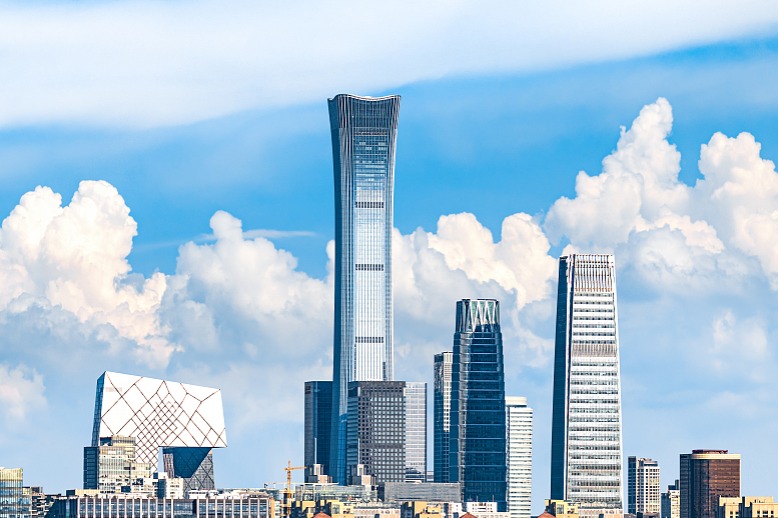Third Plenary Session of the 20th CPC Central Committee: A New Chapter in China’s Economic Transformation
The recent Third Plenary Session of the 20th Communist Party of China (CPC) Central Committee, concluded earlier this month, symbolizes a pivotal moment for China’s economic trajectory. With the ambition to boost high-quality economic development and advance structural transformation, the session’s outcomes promise to be a beacon of optimism amidst a dynamically evolving global landscape.
China’s Economic Stability and Transformation
Despite the increasingly complex international environment, China has demonstrated remarkable economic resilience. As of 2023, the country’s actual GDP growth reached 5.2 percent year-on-year, successfully aligning with the annual target. The first quarter’s GDP growth saw a rebound to 5.3 percent, laying a robust groundwork for achieving the annual goal of 5 percent.
China’s journey towards high-quality economic development is characterized by a steady optimization of its economic structure. The transition from a reliance on traditional sectors to a diversified economic model is noticeable.
Key Economic Shifts (2015-2023):
- The share of primary industries in GDP fell to 7.61 percent.
- Secondary industries saw a decline to 37.61 percent.
- Tertiary industries (services) rose significantly, now accounting for 54.78 percent of GDP.
This shift towards a service-dominated economy underscores a deeper structural transformation.
Reducing Dependency on Real Estate
Historically, China’s rapid urbanization, peaking from 1995 to 2020, spurred substantial demand in the real estate sector. However, following the introduction of a new development model for real estate at the 2021 Central Economic Work Conference, the sector’s contribution to economic growth has been redefined. Investment in real estate saw declines of 10 percent and 9.6 percent year-on-year in 2022 and 2023, respectively.
Despite this, China’s fixed-asset investment showed resilience, bolstered by strong infrastructure investments and a renewal cycle in manufacturing equipment. From 2022 to 2023, this investment grew consistently, signifying a successful preliminary transition from old to new growth drivers.
Enhancing Financial Efficiency
The transformation is also evident in China’s financial landscape. The correlation between economic and credit growth has diminished, signifying a shift from debt-driven models to asset-light service industries and direct financing. Social financing and M2, recording Year-on-Year (YoY) growth of 8.4 percent and 7 percent respectively as of May 2023, are at historical lows; yet, GDP growth remains unaffected, indicative of increased financial efficiency.
Regulatory measures to curb capital arbitrage and manually processed interest subsidies have revitalized inefficient financial resources, further optimizing the financial system’s role in supporting the real economy.
Emergence of Competitive Industries
China’s manufacturing sector is far from deindustrializing; instead, it is evolving towards high-end, digital, and green development. Strategic emerging industries—especially those in new-generation information technology and high-end equipment—are thriving. In 2023, high-tech product production soared, with solar cells (54 percent), new energy vehicles (30.3 percent), and power generators (28.5 percent) leading the charge. The export value of electric vehicles, lithium batteries, and solar cells collectively exceeded 1 trillion yuan for the first time.
Regional Economic Coordination
Regional economic disparities are gradually narrowing. The GDP contributions from central and western regions increased slightly between 2012 and 2022, enhancing overall economic balance and laying a durable foundation for equitable development and prosperity.
Addressing Current Challenges
Despite significant progress, challenges remain. The April meeting of the Political Bureau of the CPC Central Committee acknowledged several issues: insufficient effective demand, sluggish consumer and investment growth in select areas, and pressures from rising upstream costs against weak downstream demand. Moreover, risks in the real estate market, local government debt, and small financial institutions persist alongside a complex and volatile global economic environment.
A Forward-Looking Approach
The Third Plenary Session of the 20th CPC Central Committee epitomizes China’s commitment to comprehensive reforms. The outcomes of this session provide robust policy support and institutional guarantees aimed at stabilizing economic growth and enhancing long-term growth potential. As the nation navigates through challenges, the optimistic outlook fortified by these reforms suggests steady progress towards sustained economic advancement.
For more information on the Third Plenary Session of the 20th Communist Party of China Central Committee, you can visit the official website of the Chinese government.
